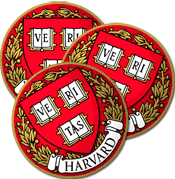One of the nice things about my job is being able to take credit for interesting student projects. We’ve got an awesome pool of kids that are always doing stuff. They have cool ideas, write up a sloppy implementation and don’t want to maintain it. So it comes to us and we have the opportunity to polish it and expand it for use to a broader audience.
The most recent of these projects to come along is the newly named “Harmony Lab”. (Formerly GoFigure / Piano Lab) This is a nice application that allows you to hook up a midi keyboard to your computer and get information about music theory stuffs (and by “music theory stuffs” I mean I haven’t yet wrapped my head around everything the application does).
Currently it is an application that uses an applet to get the midi data from the keyboard and a ton of javascript for visualizing the key/chord. And a ton of javascript is never a pretty thing.
We are giving it a backend for some authentication, cleaning up the javascript where we can, and adding some extra functionality — hopefully not too much extra. This is a cool project, but it’s usefulness is limited to one or two classes.
What’s cool about this is it’s a (potentially) simple application so it lets us play with (learn) something new (to us). So we went for python Django.



